Mind your Manners
Unit Six: Help Yourself to…
6.3. Mind your Manners
Word Bank | Phrase Bank | Communication Box |
Napkin To behave Serviette Table mat Table coaster Etiquette | To pay attention To something To beg somebody’s pardon To eat up | I’m afraid, … |
I. Conversation Warm-up.
Look at the pictures and say what table manners the children have.

Example: The children shouldn’t talk at dinner table.
II. Pronunciation warm-up.
Listen and practise the sounds /ɔ:/ and /еі/. Say what table manners you have.
TABLE MANNERS CHANT
While eating, don’t talk,
Use correctly knife-and-fork.
Don’t fidget
Never let food stay on your face.
Try to learn how to behave,
And then at table you’ll be safe.
III. Grammar smart.
1. Look and recall!
1) Use either… or… as linking words to show your choice.
Example: We can have lunch either here or at the cafe.
2) Use either as a pronoun to name one of two things.
Example: There’s tea or coffee – you can have either.
3) Use either as an adverb in negative sentences to mean “also”.
Example: I don’t like ice cream either. (Я теж не люблю морозиво)
A) Play a grammar choice game.
Example: A: We can have either tea or coffee.
В: I don’t like coffee.
С: I don’t like coffee either. So let’s have tea.
B) In groups, say as many sentences as you can:
– to show your choice in food;
– to name one of two things at dinner table;
– to explain what you don’t do at dinner either.
Example: I’d like either an apple or an orange.
C)
Example: I’d, like either an apple or an orange.
2. Read and remember!
Use too and enough to talk about table manners.
Examples:
Not too + adjective: The baby is not too big to sit at the dinner table. Too + adjective: The girl is too big not to mind her manners. Adjective + enough: You are big enough to mind your table manners. Not + adjective + enough: Your table manners are not good enough. Enough + noun: There is enough place for everyone at the dinner table.
Not enough + noun: There isn’t enough place for everyone at the dinner table.
A) Play a grammar opposition game.
Example: A: I’m big enough to try to cook myself.
B: No, you are not. You are too young to do that.
B) Look at the pictures and say if everything is OK with these children’s table manners.
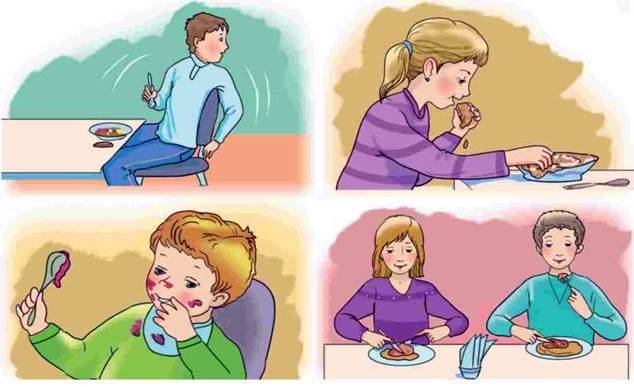
Example: The boy is too active to sit at the dinner table.
IV. Word Smart.
1) Miss Joy knows much about table manners around the world. Now she answers our questions about how English children behave at dinner table.
A) What do they eat with?
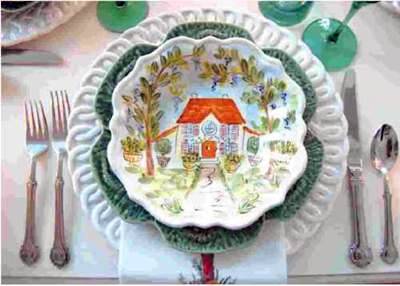
Spoon, knife, fork
B) How do they protect a table top from or drink?
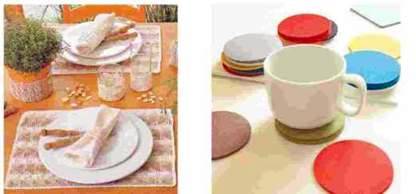
A table coaster A table mat
C) How do they protect their clothes from food or drink?
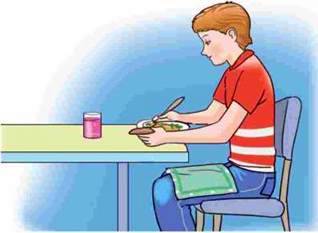
2) Complete Miss Joy’s story and retell it to your friend.
MISS JOY’S STORY
We, the English, pay much attention to… . We teach our children how to… at dinner table. There are special rules about eating…. First of all, we put… and… on the table for dinner to protect… . We place…to right of a plate and… to the its left. Of course, we use… to protect our clothes. If you follow these… nobody will say that your table manners are… .
3) Work in groups and make a list of do’s and don’ts at the dinner table.
Do’s | Don’ts |
Use a knife and a fork. | Don’t talk while eating. |
At home: Write what you like and / or dislike about table manners.
Go to Ex. 93, 94 of your Workbook
V. Time to Read
1) Read and name three things that made the school dinner special.
A SCHOOL DINNER ON A SNOWY DAY
PART I
It snowed steadily through the night and I woke next morning to see the white world outside. The school garden, the playground, the neighbouring fields, and the distant downs were in deep snow. As ‘snow days’ were unheard of in those times, I had to struggle my way to school.
There were only eighteen children in school that day and because of that there was a real family feeling in the air. When dinner time came, it turned out that the snow was too deep to let the dinner van to arrive in time.
So the teacher broke the news to the children and said we were all staying at school for dinner. She asked Mr. Willet, the janitor, to go to the shop and get some bread, tins of stewed steak, apples and – toffees! It seemed a good mixed diet, not exactly full of vitamins but nourishing and quickly prepared… .
PART II
Dinner was a huge success. The children had brought one of the long tables from the infants’ room and set it by the stove, while the teacher opened tins of steak and cut bread over in the staff room. Little Jimmy wanted to help, so he wandered round the staff room inspecting the kitchen equipment.
“And what’s this, miss?”
“That’s for mashing potatoes.”
“My mum uses a fork. What’s this?”
“A tea-strainer.”
“What for?”
“To catch the tea leaves. Pass the s>
“Because I don’t like them in my teacup.”
“What do you do with them when you’ve caught them?”
“Throw them away.”
“Well, why catch them if you throw them out after?”
The teacher took the tea-strainer to the sink and showed Jimmy with water and bits of bread crumbs how it worked. The demonstration was successful, and when the teacher presented him with an old tea-strainer, to keep the tea leaves out of his own cup at home, he was delighted.
We had dinner with great good-humour and without any table man-ners…
Adapted from Miss Reed “Village School”
To wander
To wonder
See First Aid Kit, Word Spelling, p. 216
Across Culture The USA/Great Britain
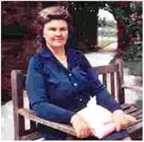
Miss Read, or Dora Jessie Saint (17 April 1913 – 7 April 2012), – an English novelist, a schoolmistriss by profession.

Snow Day – день, коли відміняються уроки в школі через сильні снігопади.
2) Answer the questions.
1. Why did the children have an improvised dinner at school?
2. What did they have for dinner?
3. Who fixed dinner for the children?
4. What kitchen objects were of help?
5. Were table manners easy enough to follow?
3) Say what characters of the story have these thought.

VI. Time to Communicate.
1) Act as Jimmy / the teacher and tell your parts of the story.
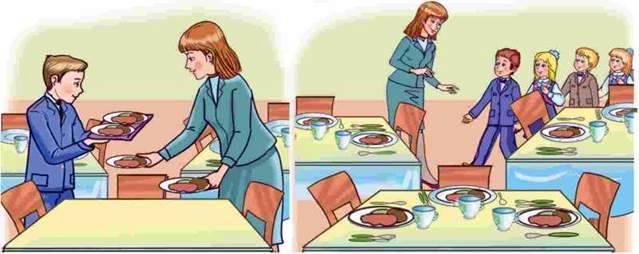
To assist;
To inspect the kitchen equipment;
A good mixed diet;
To be a huge success;
No table manners.
2) In pairs, talk about your table manners as in the pattern.
A: I think it is very important to… .
B: Please tell me what I should… .
A: Firstly, remember to… and…. Besides, ….
B: And what about… ?
A: You’ll be safe if… . Never… .
B: Should I… or… ?
A: I think you’d better… on the safe side.
B: Thank you… , you know how to… .
A: Mind….
B: Don’t worry, I will.
3. Describe your most memorable school dinner.
VII. Time to Write
Write a list of table manners for your school canteen. Use the ideas below.
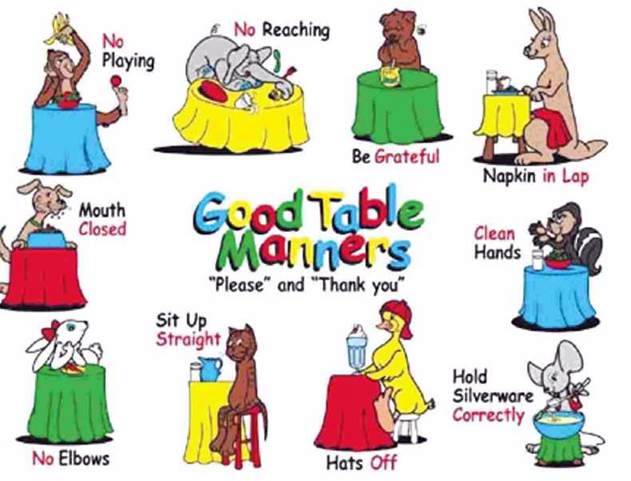
Example: Please don’t play in the school canteen.
Go to Ex. 95, 96 of your Workbook